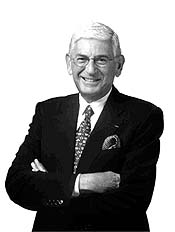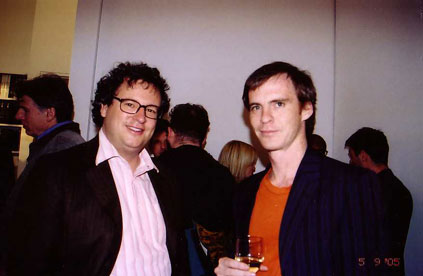art, bourdieu, contemporary art, power –
dusan/nts
– October 7, 2010 §
2005 TOP 10
1. Damien Hirst, artist, Uk
2. Larry Gagosian, dealer/ gallerist US
3. Francois Pinault, owner of Christie?s /collector, France
4. Sir Nicholas Serota, Tate director, Uk
5. Glenn D Lowry MoMA director, US
6. Eli Broad, collector/philanthropist, US-LA
7. Sam Keller, Art Basel director, Switzerland
8. Iwan Wirth, dealer/gallerist, Hayser and Wirth, Switzerland
9. Bruce Nauman, artist US
10. David Zwirner, dealer/gallerist, US

damien hirst
artist, born 65 in Bristol, 2 men I ge, father car salesman, school in Leeds, works for 2yrs at building sites, 89 art degree at Goldsmiths College London, worked in mortuary during studies, 88 curates student exhib Freeze in E London attended by Saatchi, Rosenthal and Serota, 92 shark at yBa exhib, 92 Saatchi offers him to fund whatever artwork he wants to make, regular Soho’s Groucho Club visitor, early 90s – 02 cocaine and alcohol addict, banned from Groucho, marries Californian Maia Norman (now 2 kids), 95 Turner Prize, 98 opens restaurant Pharmacy in Notting Hill, 98 records a World Cup tribute pop single Vandaloo with Fat Les (w/ actor Keith Allen and Blur bassist Alex James) and reaches #2 in charts, 98 publish autobiography "I Want To Spend the Rest of My Life Everywhere, with Everyone, One to One, Always, Forever, Now", 00 100.000 people visits his show at Gagosian in 12 weeks and all the works are sold, since 00 spends most time at remote farmhouse in north Devon, 03 good friend Joe Strummer (ex bass of The Clash) dies, founds Strummerville charity to help young musicians, 03 after retrospective at Saatchi’s: "I’m not Charles Saatchi’s barrel-organ monkey … He only recognises art with his wallet … he believes he can affect art values with buying power, and he still believes he can do it.", intr in Christianity, 03 Pharmacy closes down, 04 in fire at Saatchi’s 17 Hirst’s artworks are destroyed, 04 new agent: Gagosian, 04 solds shark for $12mil to Steve Cohen who then donates it to MoMA (Serota tried to acquire it to Tate and also gov was asked to fund)
http://www.channel4.com/culture/microsites/H/hirst/

larry gagosian
art dealer and gallerist, aka GoGo, born in LA, opened largest private gallery in London 04, Gagosian Gallery *96 has 5 branches (2x Manhattan, 1x Beverly Hills, 2x London), ArtReview’s top art businessman since 04, in 03 US gov took lawsuit against him for taxes
http://www.gagosian.com/

francois pinault
born 37
http://en.wikipedia.org/wiki/Fran%C3%A7ois_Pinault
nicholas serota
dir of Tate, curator, born 46, 7 cauac I ta, son of labour edu minister, studied economics, then history of art, 73 marries ballet dancer Angela Beveridge, 88- Tate Gallery director, 97 marries head of Tate’s info dept Teresa Gleadowe (affair since late 80s)
http://www.answers.com/topic/nicholas-serota

glenn d lowry
dir of MoMA in NYC, born 54 in NYC

eli broad
born 33, 8 ix II ge

sam keller
dir of Art Basel

(left)
iwan wirth

bruce nauman
born 41, 4 caban I sa
david zwirner
autonomy, castells, communication, good, kelly, network culture, network society, politics, power, programming, social media, web 2.0 –
only@not
– online
– August 6, 2009 §
q: “where does power lie in the global network society?”
communication is the central power in contemporary society.
via power vs counter-power; multinational corporate media networks vs creative audience; biased/scandal media politics vs insurgent grassroots media politics.
[10] defines power in a Weber-inspired way as “the relational capacity that enables a social actor to influence asymmetrically the decisions of other social actor(s) in ways that favor the empowered actor’s will, interests, and values”
[42-47,418-420] 4 kinds of power in the network society:
* networking power –
* network power
* networked power
* network-making power: “paramount form of power in the network society”; held and exercised by programmers and switchers; analysed via power struggles between the global corporate multimedia networks and the creative audience (chapter 2), the development of media policies in the USA (chapter 2), framing and counter-framing in political campaigns, especially the framing of the US public mind before, during, and after the Iraq war (chapter 3); to scandal politics in Spain in the 1990s (chapter 4), media control and censorship in the USA, Russia, and China (chapter 4); the environmental movement, the global movement against corporate globalization, the spontaneous citizens’ movement that emerged in Spain after the al-Qaeda attacks in 2004, and the Barack Obama presidential primary campaign (chapter 5).
Fuchs about “new web“:
– Tapscott and Williams claim that the “new web” brings about “a new economic democracy (…) in which we all have a lead role“ (2007)
– Kelly argues that the “new web”, where people “work toward a common goal and share their products in common, (…) contribute labor without wages and enjoy the fruits free of charge” (Kelly, 2009, p. 118) constitutes a “new socialism” – “digital socialism”. The new socialism is for Kelly a socialism, in which workers do not control and manage organizations and the material output they generate. Therefore this notion of socialism should be questioned. For Kelly, socialism lies in collective production, not in democratic economic ownership. If “socialism seeks to replace capitalism by a system in which the public interest takes precedence over the interest of private profit“, “is incompatible with the concentration of economic power in the hands of a few“, and “requires effective democratic control of the economy“ (Frankfurt Declaration of the Socialist International, 19511), then Kelly’s notion of socialism that is perfectly compatible with the existence of Microsoft, Google, Yahoo, and other web corporations (as indicated by the fact that he lists Google, Amazon, Facebook, and YouTube in his history of socialism), is not at all a notion of socialism, but one of capitalism disguised as socialism. [critique also by Lessig: http://lessig.org/blog/2009/05/et_tu_kk_aka_no_kevin_this_is.html, http://lessig.org/blog/2009/05/on_socialism_round_ii.html ]
– Castells about ‘new web’ in a refreshing techno-dialectical way that avoids the deterministic pitfalls of technooptimism and techno-pessimism. For Castells, a novel quality of communication in contemporary society is mass self-communication. The three forms of communication (interpersonal, mass communication, and mass selfcommunication) coexist, interact, and complement each other rather than substituting for one another. Castells theorizes mass self-communication based on Eco’s semiotic model of communication as the emergence of “the creative audience” (pp. 127-135) that engages in the “interactive production of meaning” (p. 132) and is based on the emergence of the figure of the “sender/addressee” (p. 130). contemporary Internet = conflict bwn global multimedia business networks that try to commodify the Internet VS “creative audience” that tries to establish a degree of citizen control of the Internet and to assert their right of communicative freedom without corporate control.
Fuchs about autonomy of communicative subjects:
– autonomy in the sense of Kant, understood as the autonomy of the will as the supreme principle of morality (Kant, 2002, p. 58), the “quality of the will of being a law to itself” (Kant, 2002, p. 63)
– autonomy as “true individualism” that Hayek (1948) had in mind, in which capitalism is conceived as spontaneous order that should be left to itself and should not be shaped by political rules (Hayek, 1988)
– autonomy as freedom of speech, taste, and assembly – “the liberty of thought and discussion” – in line with the harm principle, as postulated by John Stuart Mill (2002)
– autonomy as the existence of functionally differentiated self-referential subsystems of society (Luhmann, 1998)
– autonomy in a less individualistic sense as the combination of individual autonomy, understood as subjectivity that is “reflective and deliberative” and “frees the radical imagination” from “the enslavement of repetition” (Castoriadis, 1991, p. 164), and social autonomy, “the equal participation of all in power” (Castoriadis, 1991, p. 136; see also Castoriadis, 1998)
– theoretically unreconciled relationship of private autonomy and public autonomy that Habermas (1996, p. 84) has critically examined
– dialectic of autonomy that Habermas has in mind when he speaks of a “cooriginality of private and public autonomy” (Habermas, 1996, p. 104) achieved in a “system of rights in which private and public autonomy are internally related” (Habermas, 1996, p. 280) and “reciprocally presuppose each other” (Habermas, 1996, p. 417)
– autonomy as the “status of an organized people in an enclosed territorial unit” (Schmitt, 1996, p. 19, for a critique of this approach see Habermas, 1989)
– autonomy as a postmodern project of plural democracy with a multiplicity of subject positions (Laclau & Mouffe, 1985)
For Castells, there are the following new aspects of media politics: the use of the Internet in political campaigns (p. 230), the multiplication of entry points of political reports, on which an interaction between mainstream media and the Internet is based (p. 234), an unprecedented prevalence and significance of scandal politics (p. 246), the easy and immediate diffusion of scandal politics over the Internet by everyone (pp. 247f), an increase of the publicity and perception of corruption and of the impact on public trust (p. 289). The result would be a worldwide crisis of political legitimacy, a decline in public trust, and a crisis of democracy. These crises could possibly, but not automatically result in depoliticization, and would in many cases also create a desire for insurgent politics, social movements, and new public spaces.







